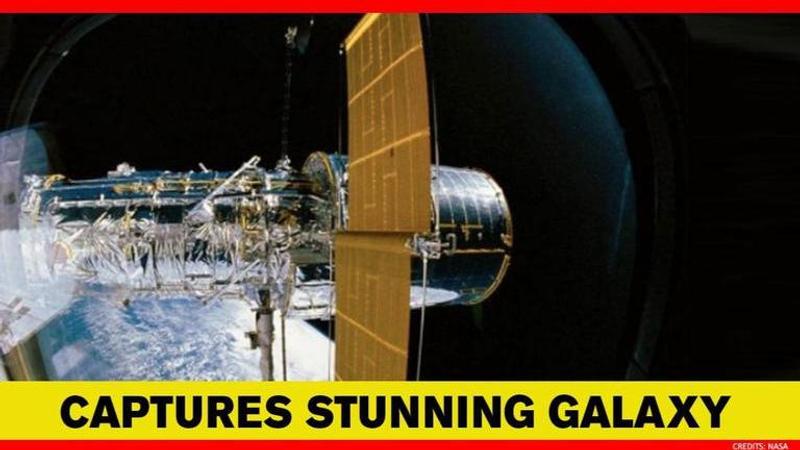Published 12:21 IST, August 17th 2020
NASA shares picture of 'eccentrically shaped' galaxy, netizens hope to see aliens
Formed as a result of an active galactic merger, the NGC 1614 galaxy is a unique entity owing to its “peculiar” appearance and a tidal tail, NASA revealed.

On August 14, NASA and European Space Station released a ‘stunning’ photograph of an eccentrically shaped galaxy known as the NGC 1614 captured by NASA’s Hubble Telescope. In an official statement, NASA revealed that the galaxy abounds in several activities was over 200 million light-years from Earth was spotted nearby Eridanus, a celestial river located in the southern constellation. The sixth-largest constellation, Eridanus, includes Achernar, one of the brightest stars in the sky, the star Epsilon Eridani, the Eridanus Supervoid, the largest void known in the universe.
The linear "tail" to the upper right and extended arms to the lower right are likely the remains of an interacting companion and the tidal plume(s) caused by the collision, NASA wrote in a release.
Formed as a result of an active galactic merger, the NGC 1614 galaxy is a unique entity owing to its “peculiar” appearance and a tidal tail. In the image released, a turbulent flow of interstellar gas that causes a cosmic collision in the formation of its structure can be made apparent. At least two galaxies merged in the nucleus of the larger one resulting in the burst of star formation in the core that spiralled outwardly in the galaxy. Also termed as a luminous infrared galaxy or the starburst galaxy, it is one of the most luminous objects in the universe second most luminous galaxy within 250 million light-years. Scientists attribute its “peculiar” trait to the involvement of predecessor systems and quasar-like luminosity, but no evidence of an active nucleus. NASA also took to its official Twitter handle to share the image and accumulated overwhelming response.
A "ridge" of dust
In the image, one can see a "ridge" of dust, focused around a bright optical center and two fairly symmetrical inner spiral arms. According to NASA, the galaxy could be a result of tidal interaction. Further, the galaxy has a spectacular outer structure with a heavily and unevenly reddened nucleus. “NGC 1614 is the result of a past galactic merger which created its peculiar appearance,” Hubble astronomers said in the release.
[This is an artist’s concept of a Jupiter-mass planet orbiting the nearby star Epsilon Eridani of Eridani constellation. Located 10.5 light-years away, it is the closest known exoplanet to our solar system. Credit: NASA]
[Nancy Grace Roman (1925-2018), NASA's first chief astronomer, founder of Hubble telescope also known as the 'Mother of Hubble.' Credit: NASA]
Updated 12:20 IST, August 17th 2020





